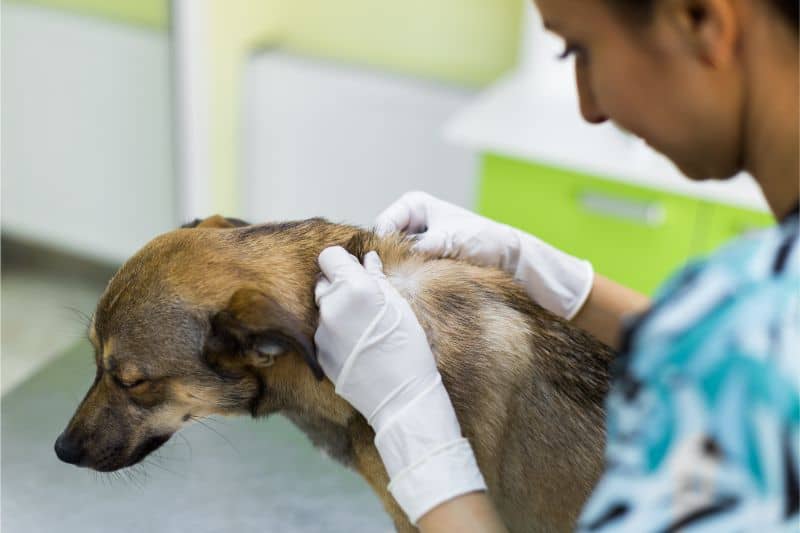Pet Lumps and Bumps: How Serious Are They?

Many of us have been there: your pet seems fine, and then suddenly you notice a lump or bump that seems to have appeared overnight. Sometimes these lumps can be caused by wounds, and other times they are other types of masses, such as warts or tumors. Whatever the cause, pet lumps and bumps are among the top ten reasons pet owners seek veterinary care for their pets.
But how can you tell what causes pet lumps and bumps? And should you worry, or should you wait to seek veterinary advice? Beverly Hills Veterinary Associates explores this topic.
Causes of Pet Lumps and Bumps
Veterinarians often refer to pet lumps and bumps as masses or tumors, whether benign or malignant. These descriptions simply mean that we are talking about a growth under or within the skin.
Most superficial pet lumps and bumps are one of three things:
Puncture wound abscess – These injuries are often caused by the bite of another animal and are common in cats. The puncture wound of the bite causes a pocket of infection that swells and eventually breaks open. These can be very painful for your pet.
Benign masses – Warts, skin tags, moles, lipomas (fatty tumors), cysts, and histiocytomas are all examples of non-cancerous masses that may or may not need to be removed.
Cancerous tumors – Malignant tumors include Mast cell tumors, squamous cell carcinomas, malignant melanomas, and cutaneous hemangiosarcomas, to name a few. Cancerous tumors on or in the skin can spread to other parts of the body, including the lungs and internal organs.
What You Should Do
If you see a lump or bump on your pet, take note of the date, the size, the exact location, and any identifying characteristics. If the lump or bump is causing your pet discomfort, or your pet is lethargic, has a poor appetite, or is showing any other signs of illness, you should have your pet seen right away.
If the mass isn’t painful, red, irritated or giving off a strong odor, you are likely not dealing with an emergency. Still, you should schedule an appointment soon to have your pet evaluated. Since some pet lumps and bumps are cancerous, it is important to have your pet evaluated as soon as possible. Cancer can grow and metastasize quickly, so the earlier we catch it, the better.
What Your Veterinarian Will Do
It’s not easy to distinguish a benign growth from a cancerous one by outer appearances alone. It’s your veterinarian’s job to determine the origin of the growth. To do this, we take the following steps:
Talk to you about the pet’s history – we’ll want to know when you first noticed the lump, how it has changed, and what other health changes you’ve noticed in your pet.
Perform a physical exam – sometimes, the appearance of the lump can give your veterinarian a lot of information. We always do a nose to tail examination as well, to make sure there are no other lumps or bumps and to determine your pet’s overall health.
Fine needle aspirate – A fine needle aspirate essentially means inserting a tiny needle into the mass or lump. The goal of this common practice is to extract a few tell tale cells that can give us an idea of what the lump is. Sometimes we need to send the microscope slides to a diagnostic laboratory for further analysis.
Unfortunately, a fine needle aspirate only tells us what cells were present where the needle was inserted. It doesn’t tell us the make up of every cell within the mass. So at times, a biopsy will be recommended.
Excisional Biopsy – An excisional biopsy is the surgical excision of the entire mass. This is followed by sending the entire mass to a diagnostic laboratory for examination. This method increases the chances of getting a definitive diagnosis, and is commonly used. Sometimes your veterinarian will recommend your pet be seen by a specialist for this surgery, especially if the entire mass cannot be palpated. It is very important to excise the entire mass, especially with some types of cancer.
If a diagnosis can be confirmed, your veterinarian can give you a prognosis and treatment plan for your pet. Treatment may be a range of no further intervention, to further surgery, to much more involved treatment for cancer, if that is the diagnosis.
The bottom line is that pet lumps and bumps should always be examined right away. Though likely to be benign, a further examination is the only way to be sure you’re not ignoring something more serious. Give us a call to schedule an appointment, or if you have further questions.
